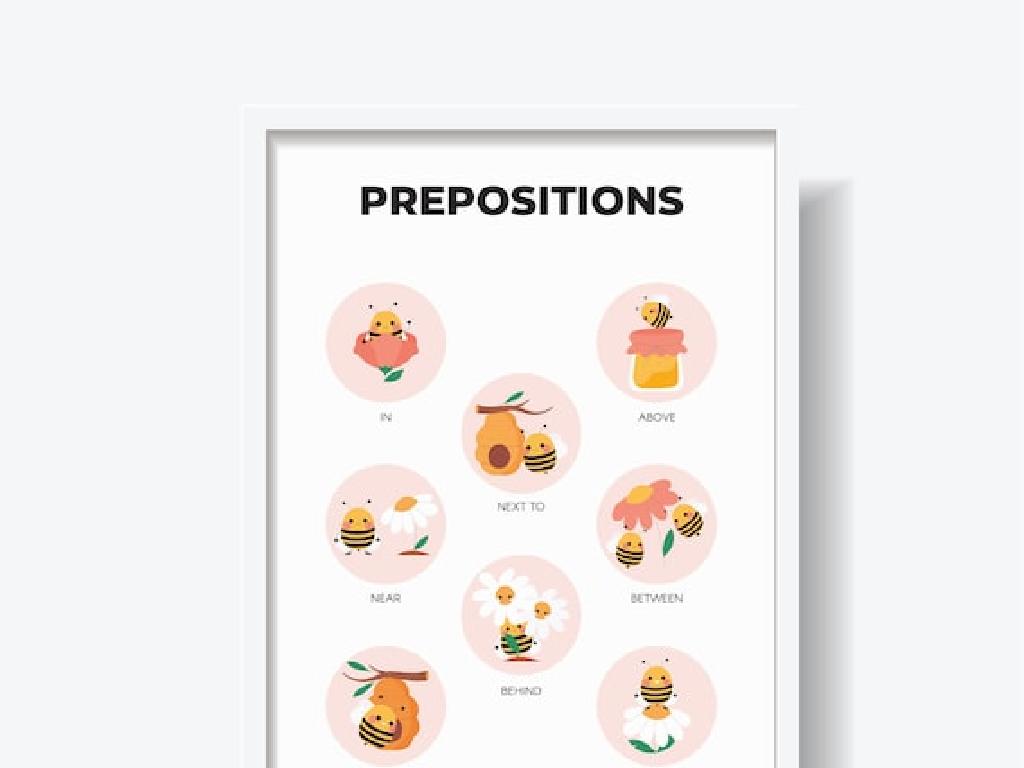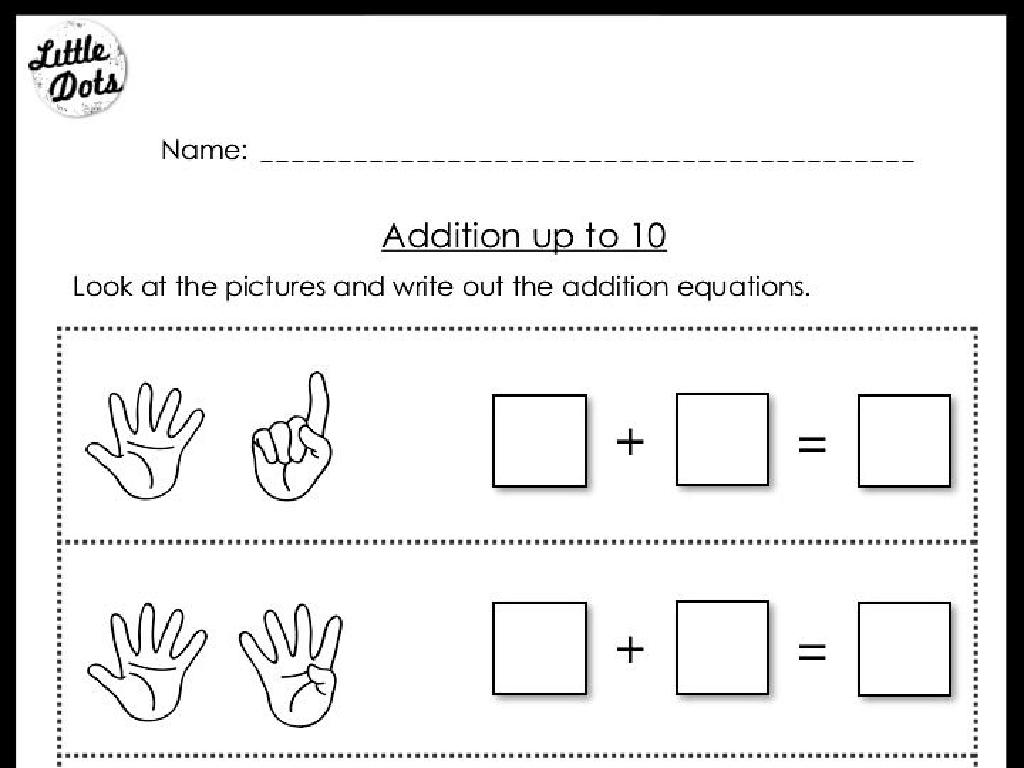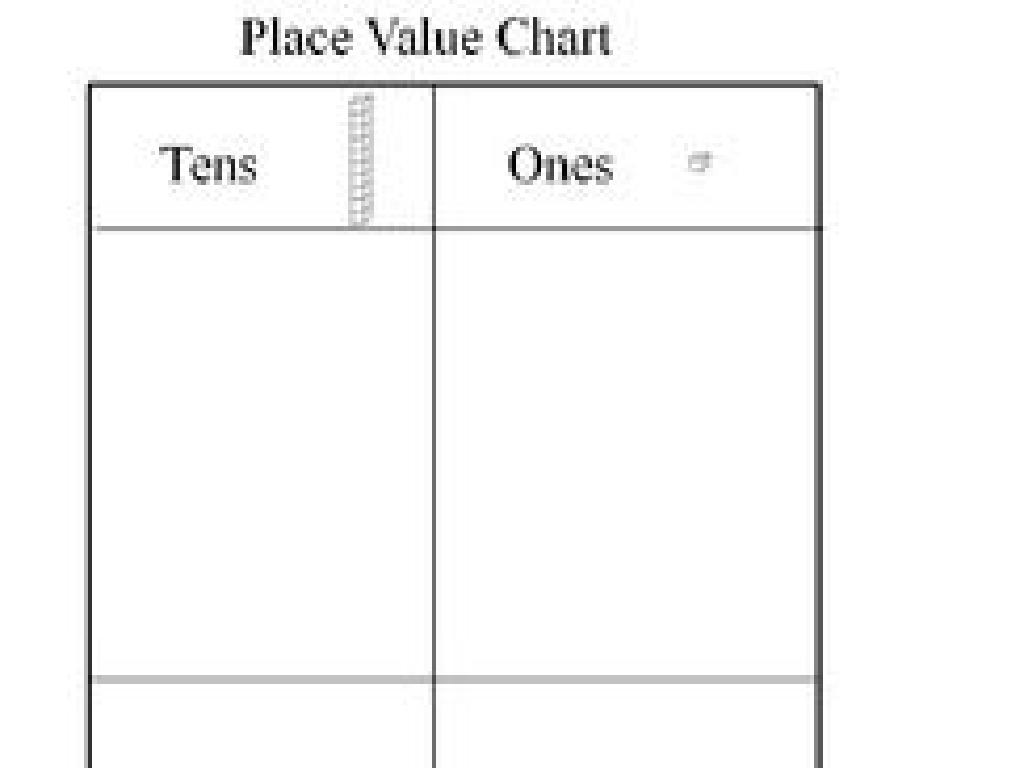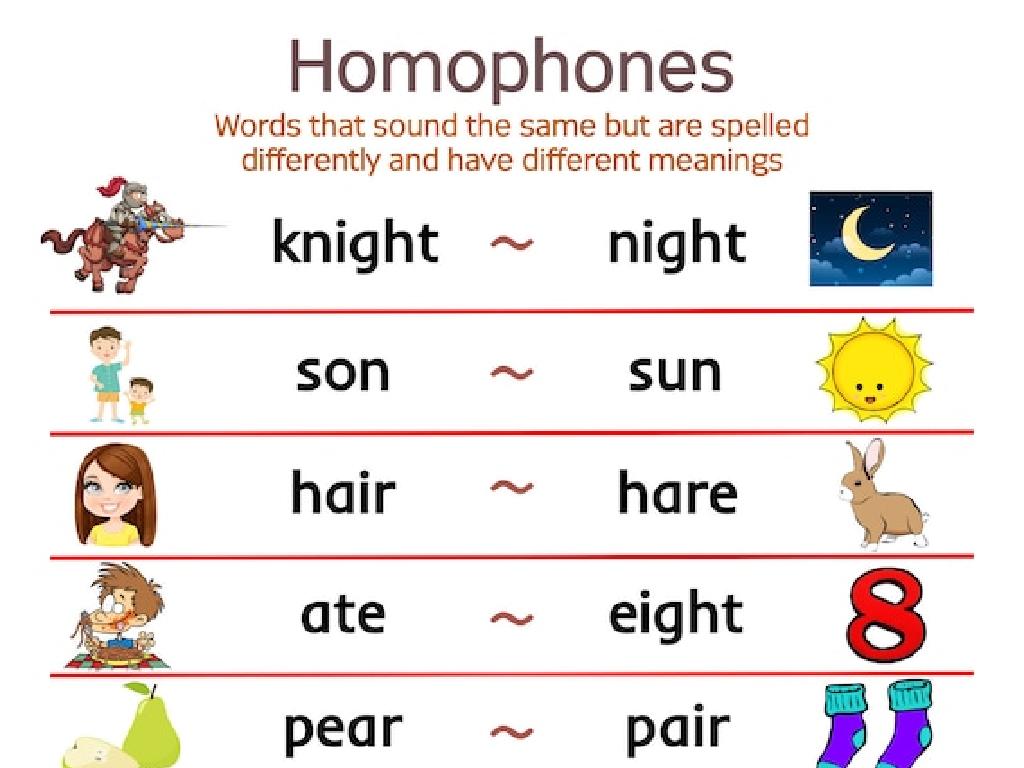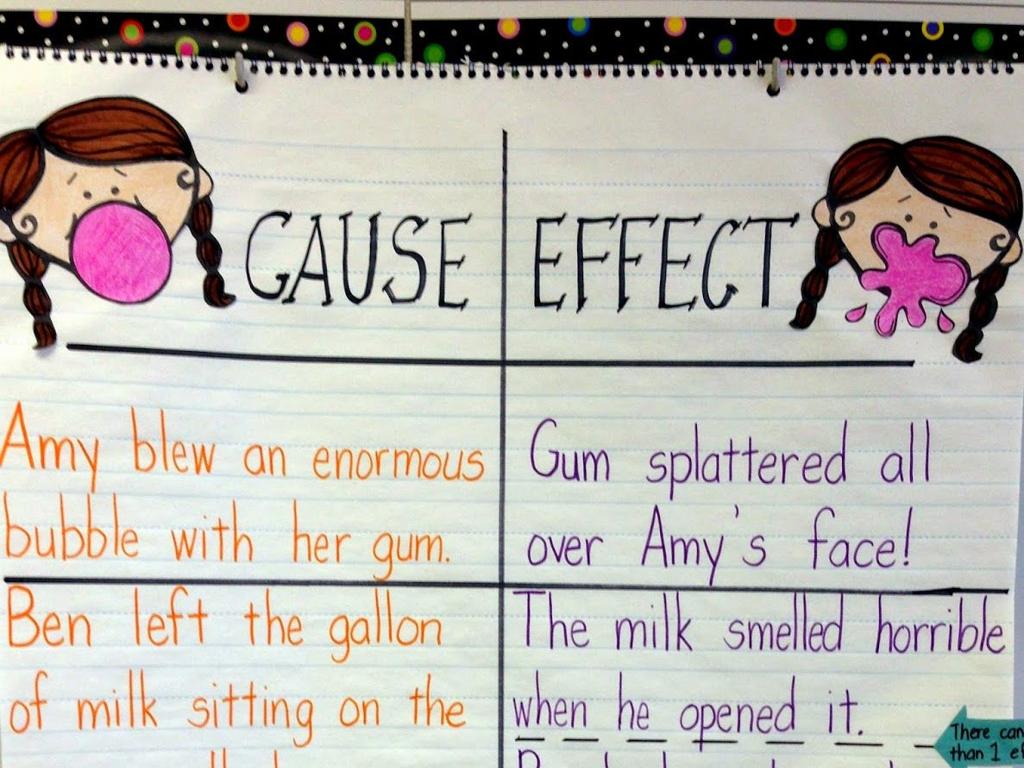Estimate Percents Of Numbers
Subject: Math
Grade: Sixth grade
Topic: Percents Of Numbers
Please LOG IN to download the presentation. Access is available to registered users only.
View More Content
Introduction to Percents
– Understanding Percents
– Percents represent parts of a hundred
– Percents, Fractions, and Decimals
– 50% is 1/2 or 0.5 in decimal form
– Real-life Percent Examples
– Discounts, tips, and interest rates
– Estimating Percents
– Rounding to nearest 5% or 10% for quick estimates
|
Begin by explaining that percents are another way to express fractions and decimals, specifically as parts of 100. This concept is fundamental in understanding how to work with percentages in various mathematical problems and real-life situations. Provide examples such as how a 50% discount means half-price, or how a 25% tip on a bill is the same as giving 1/4 of the bill amount as a tip. Emphasize the practicality of estimating percents in daily life, such as quickly calculating tips at a restaurant or sale prices while shopping. Encourage students to practice by estimating percents of numbers they encounter regularly.
Understanding Percents
– Define a percent
– A percent represents a part of a whole divided into 100 equal parts.
– ‘Percent’ means ‘per hundred’
– For example, 1% means 1 out of 100, 50% means 50 out of 100.
– Visualizing 1%, 50%, and 100%
– Use images to show what 1%, 50%, and 100% look like.
– Practice with simple percents
– Find 1%, 50%, and 100% of numbers in class activities.
|
This slide introduces the concept of percent to the students. Begin by explaining that ‘percent’ is a mathematical term used to describe a fraction of 100. Emphasize that understanding percents is crucial for everyday life, such as in sales, statistics, and finance. Use visuals to help students grasp what 1%, 50%, and 100% represent, such as a pie chart or 100 squares grid. Encourage students to think of percents as parts of a whole to make the concept more concrete. Conclude with simple practice examples to solidify their understanding.
Relating Percents to Fractions and Decimals
– Understand 50% equals 1/2 and 0.5
– Convert between percents, fractions, decimals
– For example, 25% is 1/4 and 0.25
– Practice with class examples
– Use sample problems to convert 75% to fractions and decimals
– Apply conversions in problems
– Solve real-world problems using these conversions
|
This slide introduces the concept that percents, fractions, and decimals are different ways of expressing the same value. Start by explaining that 50% is another way to say 1/2 or 0.5, which is a fundamental concept in understanding percents. Then, demonstrate how to convert between these forms with various examples. Engage the class with practice problems, converting percents to fractions and decimals and vice versa. Finally, apply these conversions to solve real-world problems, reinforcing the practical application of the concept. Encourage students to think of percents as parts of 100, and relate them to common fractions and their decimal equivalents. This will help solidify their understanding and prepare them for more complex problems.
Estimating Percents of Numbers
– Understanding the usefulness of estimation
– How to round numbers for percent estimates
– Round to the nearest whole number to simplify calculations
– Estimating 10% of any number
– Simply move the decimal one place to the left
– Estimating 25% and 50% of numbers
– For 25%, divide by 4. For 50%, divide by 2 or take half
|
Estimation is a valuable skill that allows students to quickly approximate the value of percents in everyday situations without the need for precise calculations. It’s particularly useful in scenarios like shopping discounts, calculating tips, or managing time. Teach students to round numbers to make estimating percents easier, and provide examples for common percents such as 10%, 25%, and 50%. For instance, to estimate 10% of a number, you can move the decimal one place to the left. To find 25%, you can divide the number by 4, and for 50%, simply divide by 2 or take half. Encourage students to practice with real-life examples to solidify their understanding.
Strategies for Estimating Percents
– Use benchmark percents
– Common benchmarks: 10%, 25%, 50%, 75%, 100%
– Learn estimation shortcuts
– For example, 50% is half, so 50% of 60 is 30
– Class practice activities
– Practice with classmates using benchmarks and shortcuts
– Apply strategies to real-life
– How would you estimate 20% tip on a $50 bill?
|
This slide introduces students to the concept of estimating percents using benchmarks and shortcuts, which simplifies complex calculations. Benchmarks are reference points that students can use to quickly estimate percents. Shortcuts, like knowing that 10% is the same as dividing by 10, help students make fast calculations. During class practice, students will work in groups to apply these strategies to different scenarios, enhancing their understanding through collaboration. Finally, students will be encouraged to think about how these strategies can be used in everyday situations, such as calculating tips or discounts, to make the lesson practical and relevant.
Applying Estimation with Percents
– Estimate tips for restaurant service
– If a bill is $50 and you want to leave a 20% tip, estimate the tip as 10% ($5) and double it.
– Calculate shopping discounts
– On a $40 item with a 25% discount, estimate 10% ($4) and multiply by 2.5 to get an approximate discount.
– Understand sales tax on purchases
– For a $60 game with 8% tax, find 10% ($6) and reduce it slightly to estimate the tax.
– Practice with real-life scenarios
|
This slide aims to show students how to apply estimation techniques to calculate percentages in everyday situations. Start by explaining that estimating is a useful skill for quickly calculating tips, discounts, and taxes without needing a calculator. Provide examples of how to estimate 10% as a basis for other percentages, as this is a simple fraction (1/10) of the total amount. Encourage students to practice by estimating tips for different bill amounts, calculating discounts on items they wish to buy, and figuring out the tax on items they or their family might purchase. This will help them see the relevance of math in their daily lives and build their mental math skills.
Class Activity: Percent Estimation Game
– Split into groups for the game
– Estimate percents of different numbers
– For example, estimate 25% of 60 or 10% of 150
– Use strategies for real-life problems
– How much is 20% off a $50 game or 15% tip on a $30 bill?
– Share and discuss various approaches
|
This interactive class activity is designed to help students understand the concept of estimating percents in a fun and engaging way. Divide the class into small groups and provide each with a set of numbers and percentages to estimate. Encourage them to use different estimation strategies like rounding and compatible numbers. Then, present real-life scenarios where they apply their estimation skills, such as calculating discounts and tips. After the activity, have each group share their solutions and discuss the different methods used. This will help students see the practical application of percents and learn from each other’s problem-solving techniques. Possible variations of the activity could include estimating tax on purchases, interest on savings, or percentage of ingredients in a recipe.
Estimating Percents: Recap & Homework
– Review of percent estimation
– Estimation’s role in daily life
– Helps in quick calculations like tips or discounts
– Homework: Percent estimation worksheet
– Complete the worksheet to reinforce today’s lesson
– Practice makes perfect
|
As we conclude today’s lesson, remind students of the different techniques we’ve used to estimate percents, such as rounding to the nearest ten and using benchmarks like 50% and 25%. Emphasize how estimation is a valuable skill in everyday life, helping to make quick decisions when shopping, dining out, or budgeting. For homework, assign a worksheet that provides a variety of scenarios for students to apply their estimation skills. This practice will help solidify their understanding and prepare them for more complex calculations in the future. Encourage them to try their best and remind them that making mistakes is a part of learning.

